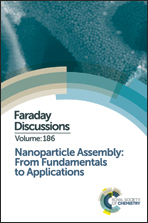Microtubule targeted therapeutics loaded polymeric assembled nanospheres for potentiation of antineoplastic activity
Abstract
Polymeric nanoassemblies represent an attractive strategy for efficient cellular internalization of microtubule targeted anticancer drugs. Using dynamic light scattering, zeta potential, transmission electron microscopy and scanning electron microscopy, the physical properties and surface morphology of microtubule-binding PEGylated PLGA assembled nanospheres (100–200 nm) were analyzed. The present approach leads to strong internalization as observed by confocal laser scanning microscopy and transmission electron microscopy in hepatocarcinoma cells. The effect of these nanoassemblies on microtubules and mitosis were explored using immunofluorescence microscopy. The effects of these nanoassemblies on cancer cell proliferation and cell death revealed their antitumor enhancing effects. Perturbation of the microtubule assembly, mitosis and nuclear modulations potentiated the antineoplastic effects delivered via nanospheres in hepatocarcinoma cells. The extensive biomolecular and physical characterizations of the synthesized nanoassemblies will help to design potent therapeutic materials and the present approach can be applied to deliver microtubule-targeted drugs for liver cancer therapy.
- This article is part of the themed collection: Nanoparticle Assembly: From Fundamentals to Applications

 Please wait while we load your content...
Please wait while we load your content...